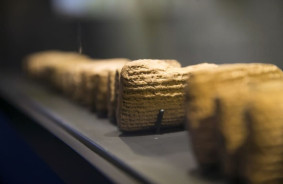Researchers from MIT have unexpectedly discovered a method for creating transistors and other electronic components without using semiconductors.
The main challenge of 3D printing electronics lies in the fact that semiconductor elements consist of thin layers of silicon and are extremely fragile. Their functionality can be affected by dust, temperature, and humidity. As a result, chips are manufactured in clean rooms, where all factors are strictly controlled to ensure the precise operation of the circuits.
Modern chip design is extraordinarily complex: they are made up of billions of transistors and manufactured using nanometer-scale technologies. This process is significantly more precise than what current 3D printers are capable of achieving.
The MIT scientists were not actually trying to replicate modern chips and hadn’t even considered it—this possibility arose almost by chance. Earlier this year, they produced magnetic inductors using a process known as extrusion printing, where the printer melts a filament and sprays the material through a nozzle, building the object layer by layer.
The researchers observed that the material they used, a polymer filament alloyed with copper nanoparticles, exhibited a substantial spike in resistance when they passed a large current through it. Once the current was turned off, the resistance returned to normal values. This ability to change resistance under the influence of current allows for the creation of transistors.
“We saw that this could help take 3D printing equipment to a new level. This method offers a clear way to ensure a certain degree of ‘intelligence’ in an electronic device,” said Luis Fernando Velasquez-Garcia, a principal investigator at MIT's Microsystems Technology Laboratory.
The team demonstrated fully 3D-printed reusable fuses and transistors using this inexpensive material. Measuring several hundred microns, these transistors are not as small and efficient as those found in modern processors. However, they are durable and can be used for simple tasks.
“The reality is that there are many engineering situations that do not require the best chips. Ultimately, what matters is whether your device can perform the task. This technology is capable of meeting certain limitations,” said Velasquez-Garcia.
With biodegradable material and no need for clean rooms, this method of making simple electronics could find applications in places where high-quality devices are challenging to produce, such as remote research labs or even aboard spacecraft. The research has been published in the journal Virtual and Physical Prototyping.











Comments (0)
There are no comments for now